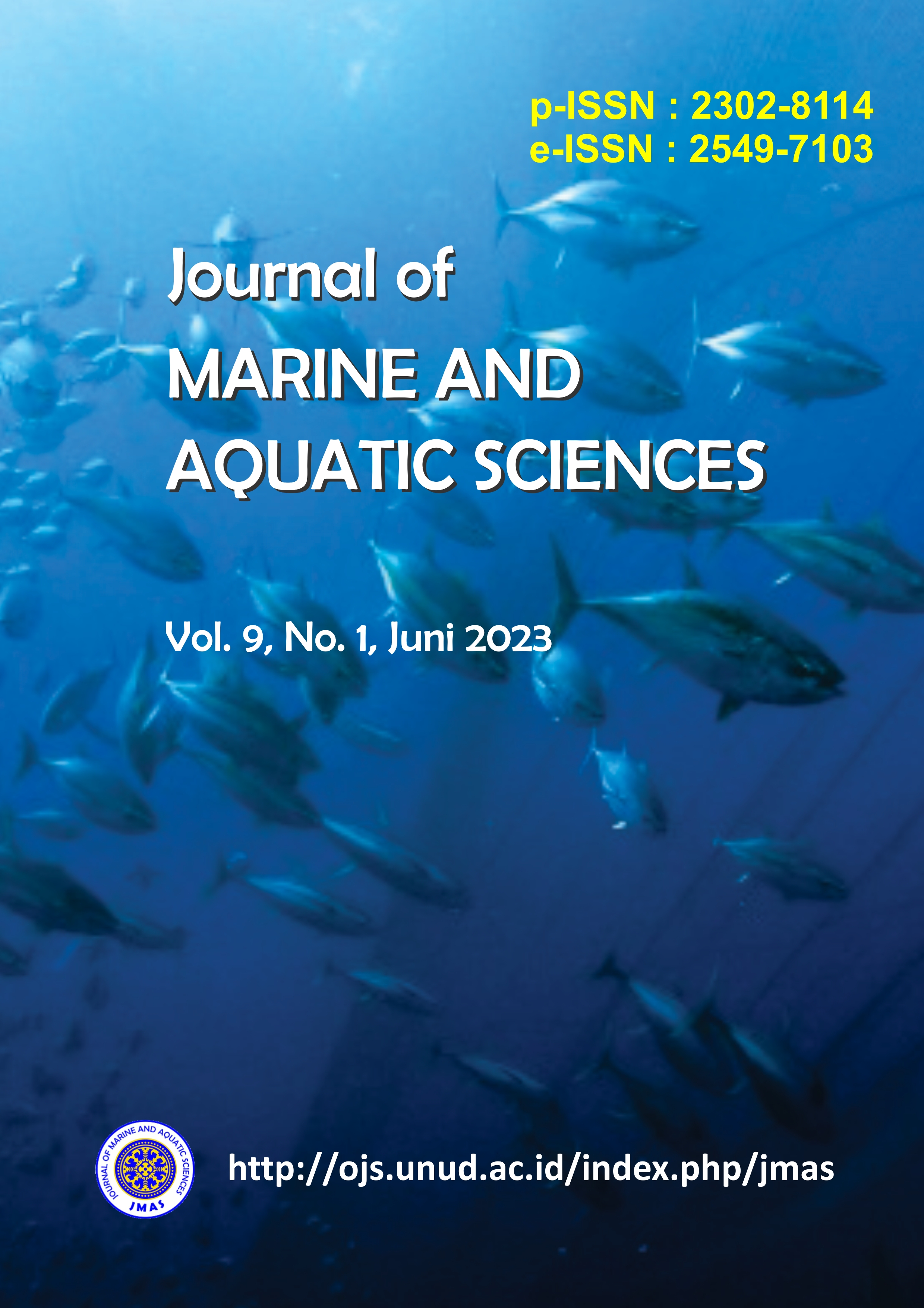Analisis Kesehatan Ekosistem Mangrove di Kawasan Taman Nasional Bali Barat (TNBB)
Abstract
Mangrove ecosystems are ecosystems located in coastal areas that are affected by tides and have many functions, namely ecological, physiological and economic functions. The purpose of this study was to determine the health condition of the mangrove ecosystem and the diversity of mangrove species in the West Bali National Park area. The technique applied in this study was a purposive random sampling method, with a total of 65 plots, and to determine the health condition of the mangrove ecosystem using the Hemispherical photography method. The mangrove species found at the observation site were Avicennia offinalis, Aegiceras floridum, Bruguiera cylindrica, Ceriops tagal, Lumnitzera racemose, Rhizophora apiculata, Rhizophora mucronata, Sonneratia alba, and Sonneratia caseolaris. The value of mangrove health conditions is determined from several parameters such as canopy cover which has a range of cover values ranging from 51.35% - 66.67% with an average percentage cover of all data collection stations of 60.27%, density has a value range of 2100 trees/ha – 8867 trees/ha, with a diversity value of 0.97 in the low diversity category, and with an average environmental parameter value such as temperature around 28.1 ± 0.56?, while the average value of salinity is 22.3 ±3.27‰, and the average pH was 5.9±0.12, with sandy mud substrate dominating the entire observation area.
Downloads

This work is licensed under a Creative Commons Attribution 3.0 International License.
Copyright 2012 - 2023 Journal of Marine and Aquatic Sciences (JMAS)
Published by Fakultas Kelautan dan Perikanan Universitas Udayana, Denpasar, Bali, Indonesia
JMAS (p-ISSN 2302-8114; e-ISSN 2549-7103)


